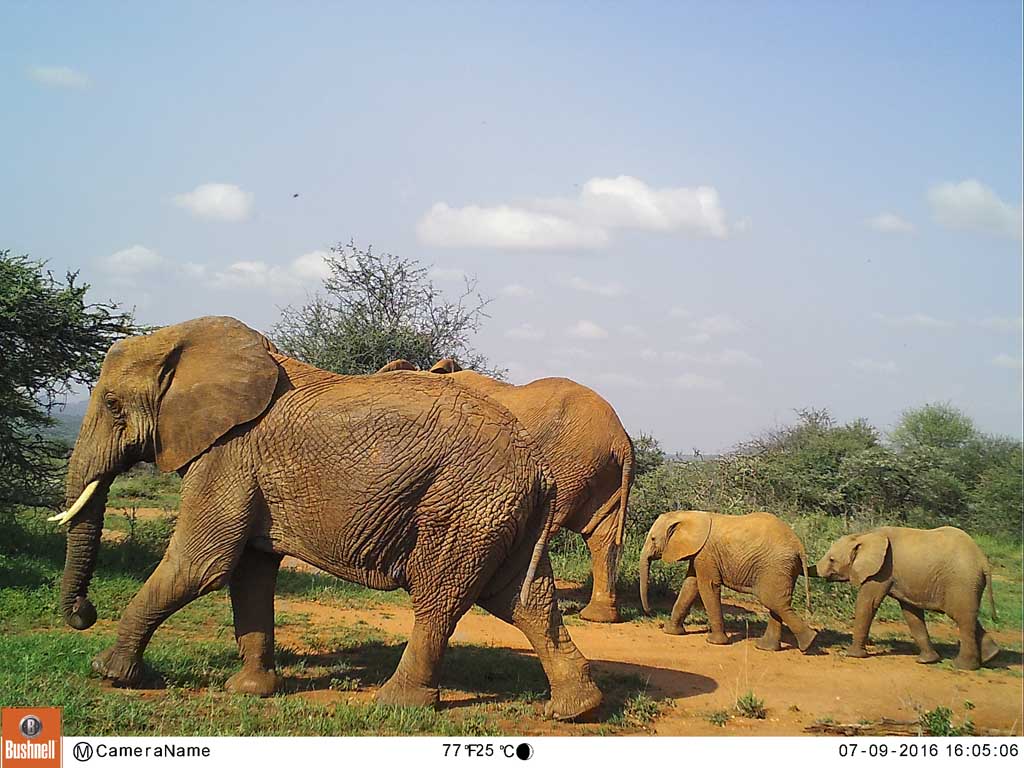
San Diego Zoo Global’s Online Conservation Project Is Off to a Speedy Start
Volunteers Complete Two Years of Giraffe Conservation Work in Two Months
It’s a win for conservation this month, after researchers revealed that more than 4,000 online volunteers have completed more than two years of conservation work in the span of only two months. The volunteers are taking part in a giraffe tracking project through San Diego Zoo Global’s crowdsourcing conservation website WildwatchKenya.org, which launched in June. Since then, volunteers have made more than 1 million classifications and retired almost 100,000 individual images from motion-activated trail cameras in Kenya—providing researchers with enough data to allow them to explore "giraffe hotspots" (areas that are showing high volumes of giraffe activity), as well as identifying areas with no signs of giraffes. Conservationists said they are happy with the site launch, but a lot more work still needs to be done—and Wildwatch Kenya is expected to become even more valuable moving forward.
“This crowdsourcing tool has been a critical component in our giraffe conservation work,” said Jenna Stacy-Dawes, research coordinator for San Diego Zoo Global. “With cameras still in the field and more data being collected, there are still over 600,000 images that need to be classified. We would not be able to do that amount of data analysis or find these trends in the images so quickly if it was not for our volunteers on the site.”
The data is expected to help research teams determine which areas may need more protection, as well as investigate areas that giraffes are avoiding and what is causing them to avoid these areas. While the primary focus of this research is to study giraffes, the data also provides insight into the abundance and diversity of species present at the research sites—at times surprising scientists with never-before-seen evidence of other animal species.
“We all believed that honey badgers did not venture within the Loisaba Conservancy area; but through our past batch of photos, we found an image of a honey badger roaming the area,” said Stacy-Dawes. “It was a great find that may have taken us a very long time to notice without the help of our website volunteers.”
The Wildwatch Kenya site was created using Zooniverse's free Project Builder tool at zooniverse.org/lab, the largest online platform for crowdsourced volunteer research. Anyone wishing to participate can do so by visiting WildwatchKenya.org. Volunteers will be asked to identify what is pictured in trail photos—normally only seen by conservationists—by choosing from an animal list or indicating that no animal is pictured. Each image is viewed by multiple volunteers, to ensure that photos that are not needed are filtered out.
The crowdsourcing project is part of an overall effort by scientists to gather more information on giraffes. Earlier this summer, a team of conservationists made up of personnel from the Giraffe Conservation Foundation, Northern Rangelands Trust, Kenya Wildlife Service, The Nature Conservancy, Loisaba Conservancy, the Smithsonian Institution, Lewa Wildlife Conservancy, Senckenberg BiK-F, Goethe University and San Diego Zoo Global fitted 11 reticulated giraffes in the region with small solar-powered GPS tracking devices made by Savannah Tracking. This unprecedented project is now providing real-time data on giraffe movements, the size of their home ranges, where they travel during seasons and the travel corridors they use. This information could assist community conservancies in developing better strategies for managing their lands and livestock, while also expanding the frontiers of giraffe science.
Scientists hope this project, as well as other conservation efforts, will slow and eventually stop the continued decline of giraffe populations worldwide. Currently, there are fewer than 100,000 giraffes left in their native habitats—a decrease of more than 40 percent over the last 20 years. These numbers have alarmed conservationists, leading the International Union for Conservation of Nature (IUCN) to change giraffes’ status last year to Vulnerable on the IUCN Red List of Threatened Species. Scientists believe the startling downward trend is due to poaching, habitat loss, habitat fragmentation and disease. In fact, certain giraffe subpopulations have decreased so rapidly, they are now extinct in seven African nations. San Diego Zoo Global has partnered with the Giraffe Conservation Foundation, Northern Rangelands Trust, Kenya Wildlife Service and The Nature Conservancy, as well as other conservation organizations, to help reverse this trend in East Africa through the creation of community-based conservation projects with Kenyan pastoralists.














